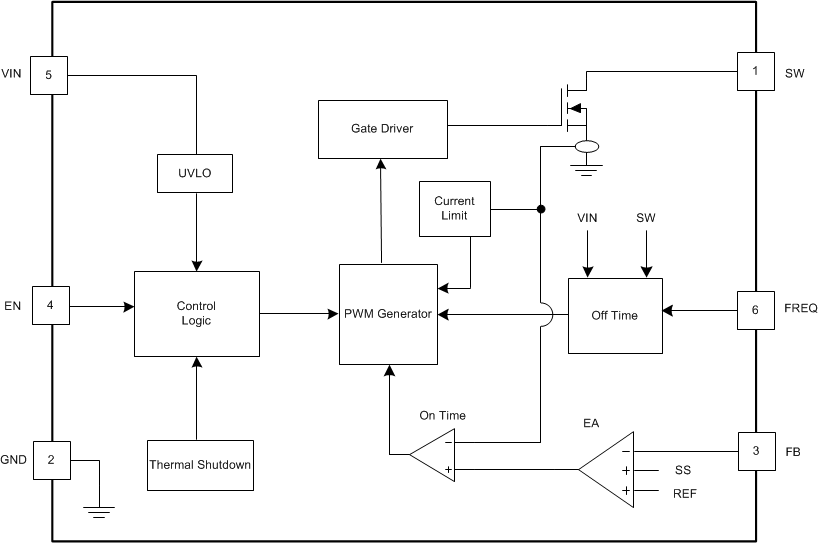TIDUEZ4 May 2021
- Description
- Resources
- Features
- Applications
- 5
- 1System Description
-
2System Overview
- 2.1 Block Diagram
- 2.2 Highlighted Products
- 2.3 Design Considerations
- 3Hardware, Software, Testing Requirements, and Test Results
- 4Design and Documentation Support
- 5About the Author
2.2.3.4 TLV61048
The TLV61048 is a non-synchronous boost converter supporting output voltage up to 14 V with input ranging from 2.65 V to 5.5 V. The TLV61048 integrates a power switch with current limit up to 3.7 A (typical). The device operates in a current mode scheme with quasi-constant frequency with internal loop compensation built in. The switching frequency is selectable between 600 kHz and 1 MHz. There is internal fixed soft start time which is 2 ms typically to control the inrush current during start-up. Topology of the TLV61048 boost converter is adaptive off-time with peak current control, which provides superior load and line transient responses. The selectable switching frequency offers the possibility to optimize the design either for the use of small sized inductor (1 MHz) or for higher system efficiency (600 kHz). The converter operates in continuous conduction mode (CCM) when the inductor valley current is above zero, and switches into discontinuous conduction mode (DCM) if valley current crossing zero. If the load is further lowered, the device enters into PFM operation to achieve even higher efficiency.
The camera module design supports IR LED illumination. The host processor enables IR illumination using TLV61048 during night.
 Figure 2-17 TLV61048 Functional Block
Diagram
Figure 2-17 TLV61048 Functional Block
Diagram